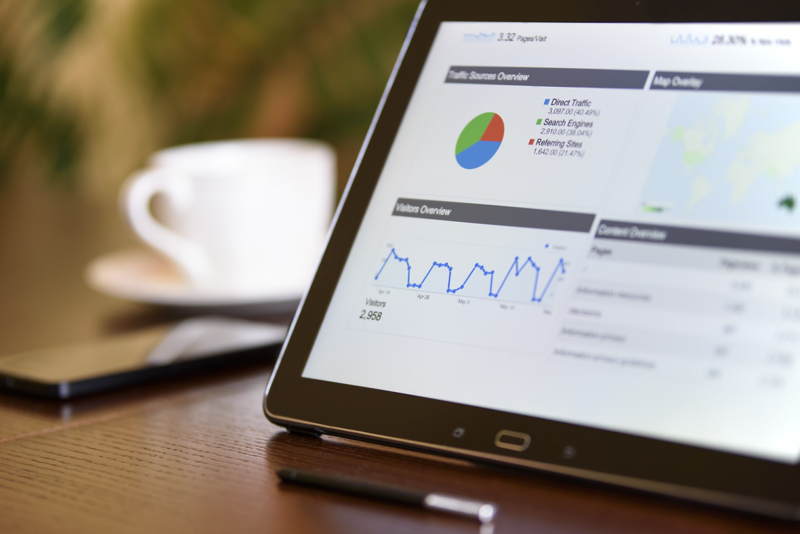
In today’s digital age, consumers are bombarded with countless marketing messages every day. The brands that cut through the noise are those that deliver personalized experiences, making their audience feel seen, heard, and understood. Personalization has become a key strategy in modern marketing, enabling businesses to tailor their messages to individual customers’ preferences, behaviors, and needs. This approach not only enhances customer satisfaction but also improves engagement, loyalty, and, ultimately, conversions. In this article, we’ll explore the power of personalization in marketing and how you can implement it to better connect with your audience.
1. What is Marketing Personalization?
Marketing personalization is the practice of tailoring messages, offers, and content to individual customers based on their data. This can include personal information like demographics, purchase history, browsing behavior, and even psychographic insights, such as preferences, attitudes, and values.
- Dynamic Content: Personalization can be as simple as addressing someone by their first name in an email or as complex as serving different website content to visitors based on their past interactions.
- Data-Driven: Personalization relies heavily on data collection and analysis. The more you know about your audience, the better you can personalize their experience.
- Customer-Centric Approach: The goal of personalization is to create a more relevant and meaningful experience for each customer. It’s about delivering the right message to the right person at the right time.
Personalization transforms generic marketing into a customer-centric approach, making each interaction feel more relevant and engaging.
2. The Benefits of Personalization in Marketing
The power of personalization lies in its ability to foster stronger connections between brands and their audiences. Here are some key benefits of implementing personalization in your marketing strategy:
- Higher Engagement: Personalized content is more likely to catch the attention of your audience. Whether it’s a personalized email or a tailored recommendation, people are more likely to engage with content that speaks directly to them.
- Improved Customer Loyalty: When customers feel understood and valued, they are more likely to stay loyal to your brand. Personalization helps build long-term relationships by showing customers that you care about their individual needs and preferences.
- Increased Conversions: Personalization has a direct impact on conversion rates. By delivering tailored offers and product recommendations, you can increase the likelihood of turning prospects into customers.
- Better Customer Retention: Personalized marketing not only helps acquire new customers but also retains existing ones. Engaging your current customers with personalized offers and content can reduce churn and increase customer lifetime value.
- Enhanced User Experience: Personalized experiences improve the overall user journey, making interactions with your brand more enjoyable and seamless.
These benefits highlight why personalization is essential for any brand looking to build deeper, more meaningful connections with its audience.
3. Key Data Points for Personalization
To effectively personalize your marketing, you need to gather and analyze the right data about your customers. Here are some of the most important data points to consider for personalization:
- Demographics: Age, gender, location, and income level are basic demographic factors that can help you segment your audience and tailor your messaging accordingly.
- Purchase History: By analyzing past purchases, you can recommend similar or complementary products, offer discounts on repeat purchases, or reward loyal customers with exclusive offers.
- Browsing Behavior: Tracking the pages and products a user views on your website can help you understand their interests and serve them relevant content or ads based on their behavior.
- Email Engagement: Monitor how subscribers interact with your emails—whether they open, click, or ignore them. This can guide how you tailor future email campaigns.
- Preferences and Interests: Surveys, preference centers, or customer profiles can provide valuable insights into individual likes and dislikes, enabling more accurate personalization.
The more data you have, the more opportunities you have to deliver personalized experiences that resonate with your audience.
4. Personalization Across Marketing Channels
Personalization can be applied across various marketing channels, ensuring that your audience has a cohesive and personalized experience, no matter where they interact with your brand.
- Email Marketing: Personalized emails are one of the most effective ways to engage your audience. Use dynamic content, personalized subject lines, and tailored product recommendations to make your emails more relevant.
- Website Personalization: Personalizing your website experience based on a visitor’s browsing behavior or previous interactions can keep them engaged and guide them toward conversion. For example, displaying personalized product recommendations or tailored content can make the browsing experience more relevant.
- Social Media Ads: Social platforms like Facebook and Instagram allow you to create highly targeted ad campaigns based on demographics, interests, and behaviors. Use personalized ads to reach specific segments of your audience with relevant offers.
- Push Notifications: Personalized push notifications can drive users back to your app or website by delivering timely and relevant messages, such as reminders about abandoned carts or exclusive offers.
- Chatbots and AI: AI-powered chatbots can provide personalized recommendations and support to users based on their inquiries and past interactions with your brand.
By applying personalization across multiple channels, you create a consistent and unified experience that strengthens your brand’s relationship with customers.
5. Personalization Tactics for Different Stages of the Customer Journey
Personalization can be especially effective when tailored to the different stages of the customer journey. Here’s how to personalize your marketing for each stage:
- Awareness Stage: At this stage, prospects are just getting to know your brand. Use personalized content such as blog posts, videos, or social media ads that align with their interests or pain points to attract their attention.
- Consideration Stage: Once prospects have shown interest in your brand, use personalized email sequences or retargeting ads that highlight specific products or services based on their browsing behavior or engagement.
- Decision Stage: During the decision-making process, personalized offers, discounts, or product recommendations can nudge prospects toward making a purchase.
- Post-Purchase Stage: After a customer has made a purchase, personalized follow-up emails or loyalty rewards can encourage repeat business and build long-term loyalty.
Tailoring your personalization efforts to each stage of the customer journey ensures that your marketing is always relevant and valuable to your audience.
6. Tools and Technologies for Effective Personalization
To implement personalization at scale, you’ll need the right tools and technologies. Here are some of the key tools that can help you deliver personalized marketing:
- Customer Relationship Management (CRM) Systems: A CRM system helps you track and manage customer interactions, allowing you to store valuable data that can be used for personalization.
- Email Marketing Platforms: Email marketing platforms like Mailchimp, HubSpot, and Klaviyo offer advanced segmentation and dynamic content features that allow you to send personalized emails to specific groups.
- Personalization Engines: Tools like Optimizely, Dynamic Yield, and Monetate enable real-time website personalization, allowing you to tailor the user experience based on behavior, preferences, and data insights.
- AI and Machine Learning: AI-powered tools can analyze large amounts of customer data to predict behavior, segment audiences, and deliver personalized recommendations at scale.
- Analytics Tools: Tools like Google Analytics and Mixpanel help track user behavior and provide insights that can guide your personalization efforts.
These tools enable you to implement personalization at scale, ensuring that each customer receives a tailored experience, whether through email, your website, or other digital channels.
7. Measuring the Success of Personalization
To determine whether your personalization efforts are paying off, it’s essential to track key performance indicators (KPIs) and metrics that measure the effectiveness of your campaigns.
- Conversion Rate: One of the most important metrics to track is the conversion rate. Personalized marketing should lead to higher conversion rates by delivering relevant offers that resonate with your audience.
- Engagement Rate: Monitor how often your audience engages with your personalized content. Higher open rates, click-through rates, and time spent on-site indicate that your personalization efforts are successful.
- Customer Retention: Personalized marketing can help increase customer retention rates by providing ongoing value. Track repeat purchases, subscription renewals, and customer lifetime value to assess the impact of your efforts.
- Return on Investment (ROI): Personalization should lead to a higher ROI by improving customer satisfaction and driving more conversions. Compare the revenue generated from personalized campaigns with the cost of implementing personalization tools and strategies.
By regularly tracking these metrics, you can refine your personalization strategy to ensure it’s delivering the best possible results.
Conclusion: The Future of Personalized Marketing
As consumers continue to expect more personalized experiences, the importance of personalization in marketing will only grow. Brands that successfully implement personalization can stand out from the competition, build deeper connections with their audience, and drive better business outcomes. By leveraging data, utilizing the right tools, and applying personalization across multiple channels, you can create marketing campaigns that resonate with your audience on a personal level, leading to higher engagement, loyalty, and conversions.






